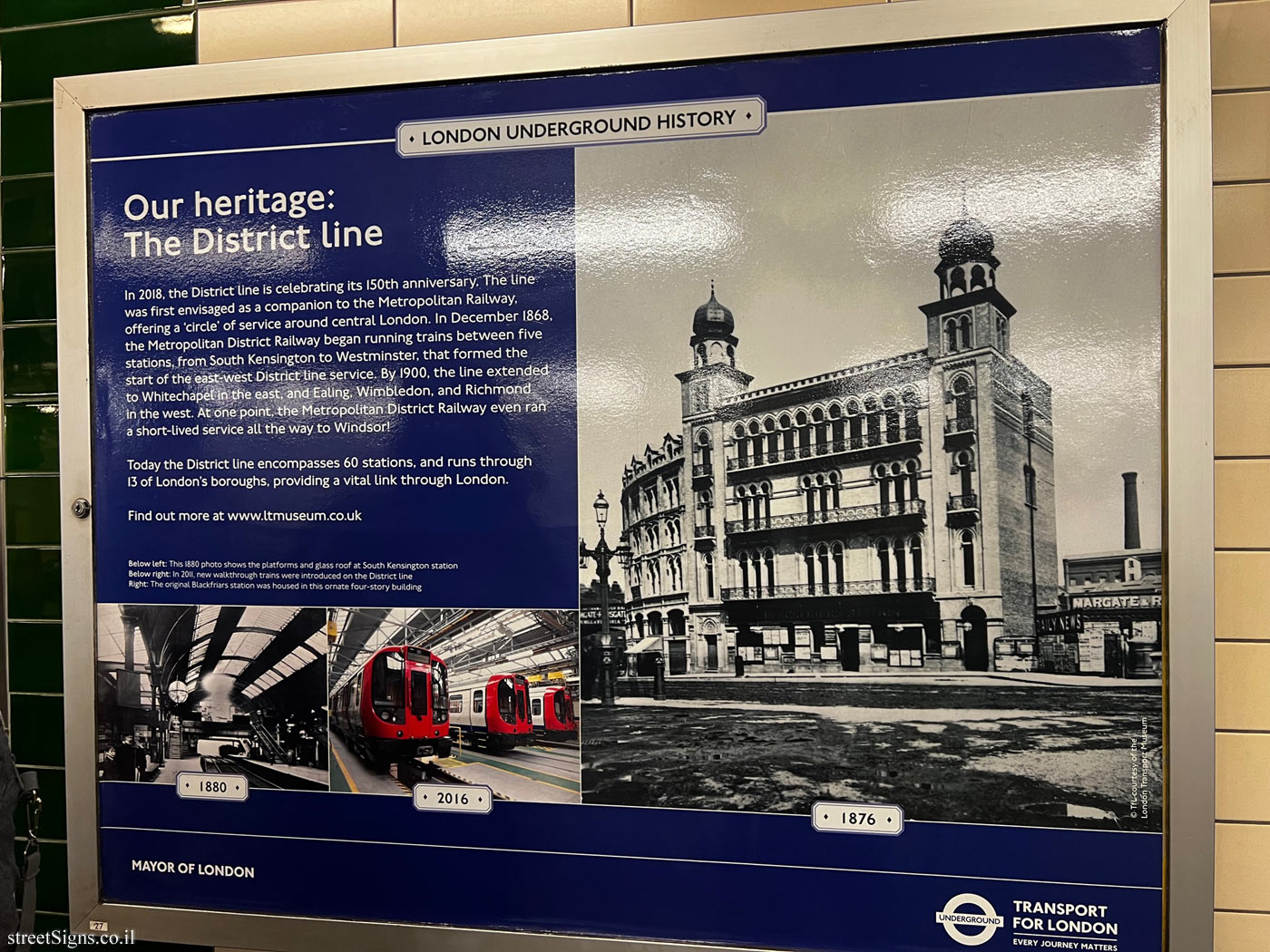LONDON UNDERGROUND HISTORY
Our heritage: The District line In 2018, the District line is celebrating its 150th anniversary. The line was first envisaged as a companion to the Metropolitan Railway,. offering a ’circle’ of service around central London. In December 1868, the Metropolitan District Railway began running trains between five stations, from South Kensington to Westminster, that formed the start of the east-west District line service. By 1900, the line extended to Whitechapel in the east, and Ealing, Wimbledon, and Richmond in the west. At one point, the Metropolitan District Railway even ran a short-lived service all the way to Windsor!
Today the District line encompasses 60 stations, and runs through 13 of London’s boroughs, providing a vital link through London.
Find out more at
www.ltmuseum.co.uk [Images]:
Below left: This 1880 photo shows the platforms and glass roof at South Kensington station
Below right: In 2011, new walkthrough trains were introduced on the District line
Right: The original Blackfriars station was housed in this ornate four-story building
MAYOR OF LONDON
Logo of the Underground
TRANSPORT FOR LONDON - EVERY JOURNEY MATTERS
© TFL courtesy of the London Transport Museum
27


 Click for all signs belonging to London Underground History
Click for all signs belonging to London Underground History
 852 Meter |
852 Meter |  854 Meter |
854 Meter |  1.41 Km |
1.41 Km |  1.76 Km |
1.76 Km |  1.97 Km
1.97 Km